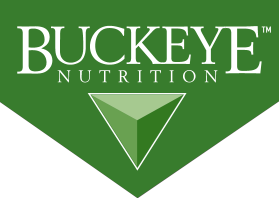Low NSC Horse Feed for Metabolic Horses and Ponies
Horses undergo numerous physical and metabolic changes throughout their lives, many of which may require specific adjustments to their nutrition and management. For example:
- Horses with dental issues may need easier-to-chew feeds or forage alternatives.
- Easy keepers (especially those not in regular work) may be prone to obesity.
- Other horses may struggle to maintain weight and muscle mass, especially as they get older.
One key challenge is managing horses with metabolic dysregulation. Changes in metabolic status can occur at any age, making ongoing monitoring and customized feeding strategies essential for preserving our horses' overall health and condition. However, effective management can be particularly challenging when faced with metabolic dysregulation in our equine companions.
What are Common Equine Metabolic Disorders?
Metabolic disorders can manifest in various forms in horses, and sometimes a single horse may have more than one metabolic disorder. One of the more well-known metabolic disorders among horse owners is Cushing’s Disease, or PPID. PPID, which stands for pars pituitary intermedia dysfunction, is a condition that affects the pituitary gland. Insulin Dysregulation (ID) is a metabolic disorder that can coexist with PPID in potentially 25% or more of cases. Additionally, ID is a key component of Equine Metabolic Syndrome (EMS) and increases the risk of laminitis. Insulin dysregulation involves elevated basal or ‘resting’ blood insulin levels, an exaggerated insulin response to the consumption of starch and sugar, and tissue insulin resistance (where cells do not respond to insulin properly). Our understanding of these metabolic disorders is constantly evolving through research. Proper management of these conditions in affected horses is vital for reducing the risk of negative health impacts, such as laminitis.
How to Manage Horses with Metabolic Disorders
If a horse is suspected of having a metabolic disorder, it's important to work closely with both a veterinarian and an equine nutritionist to develop a tailored management plan. These conditions often vary significantly from horse to horse—some respond well to relatively simple changes, while others may require more intensive and closely monitored care. Not every horse or pony with insulin dysregulation needs strict management, but for those that do, a well-structured plan is essential.
Prescription medications are available that can help manage certain metabolic disorders, and ongoing research continues to explore improved methods for diagnosis, treatment, and long-term care. In most cases, dietary adjustments are also a key part of management. Reducing non-structural carbohydrates (NSC)— sugars and starches—is often necessary to support more stable insulin levels and lower the risk of complications like laminitis. Commercial feeds can play a major role here, particularly for horses that are more sensitive to dietary starch and sugar
What is an ideal NSC level for horses with metabolic disorders?
Most dietary guidelines for horses with insulin dysregulation recommend feeding a diet low in non-structural carbohydrates (NSCs). However, it can be difficult for owners and equine managers to know how low is low enough, especially for horses and ponies who are highly sensitive and at increased risk of complications like laminitis.
Recent research conducted by the University of Kentucky, the Waltham Petcare Science Institute, and Mars Horsecare/BUCKEYE™ Nutrition has suggested that, as a guide, the NSC threshold for severely insulin dysregulated horses is no more than 0.1g of NSC per kilogram of body weight per meal. For a 1,100-pound (500 kg) horse, this equates to a maximum of 50 grams of NSC per meal. Exceeding this amount is more likely to result in a significant rise in insulin levels.
In response to these findings, BUCKEYE™ Nutrition has developed LOW ‘N STEADY™, the first ration balancer formulated specifically to meet the nutritional needs of those more severely insulin dysregulated horses by staying below this recommended NSC level. LOW ‘N STEADY™ contains just 8.5% NSC but importantly, when fed as recommended, delivers 48 grams of NSC per 1.25-pound serving for an idle 1,100-pound horse— coming in under the 50-gram threshold. For especially sensitive insulin-dysregulating individuals, we can further reduce the grams of NSC per meal by splitting the recommended feeding rate into multiple daily meals.
Calculate Your Feed’s NSC Content
Fill in the blanks of the equation below to determine how many grams of NSC per meal your current feed provides. Then, compare it to the graph below to see how it compares to the suggested threshold (in blue) as well as LOW ‘N STEADY (in red)!

NSC of Forage Must be Considered
It is equally important to evaluate forage as a source of dietary non-structural carbohydrates (NSC), since forage should comprise the majority of the equine diet. You may need to take steps to reduce the NSC content in the forage you provide or even change the forage itself, as different individuals may require varying levels of NSC to maintain an optimal metabolic status. Consult with your veterinarian or nutrition advisor, as it is essential to routinely monitor insulin responses, especially for those individuals who are highly sensitive.
Tailored Care Is Critical for Metabolic Horses
Managing the health and well-being of metabolically dysregulated horses often necessitates a mindful and individualized approach. Mars Horsecare and the Waltham Petcare Science Institute, in partnership with our academic research collaborators, are continually researching ways to reduce the impact of conditions like PPID and Insulin Dysregulation. Effectively managing these conditions through proper diet and medical care is crucial to help minimize the risk of complications such as laminitis. Collaborating closely with veterinarians and nutritionists enables equine owners to make informed decisions about their horses’ diets and encourages controlled intake of non-structural carbohydrates (NSC) to support stable blood insulin concentrations. As research progresses, tools like LOW ‘N STEADY from BUCKEYE Nutrition offer a valuable option to meet the nutritional needs of insulin-dysregulating horses when combined with adequate amounts of suitable forage. Careful monitoring and dietary adjustments are crucial for maintaining the health and well-being of horses with metabolic conditions.
